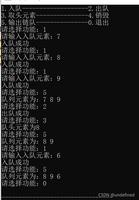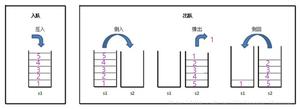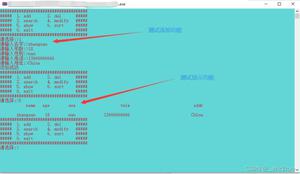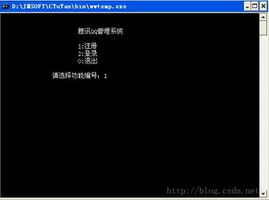如何在Go中实现队列?
当前的Go库不提供队列容器。为了实现一个简单的队列,我使用圆形数组作为基础数据结构。它遵循TAOCP中提到的算法:
Insert Y into queue X: X[R]<-Y; R<-(R+1)%M; if R=F then OVERFLOW.Delete Y from queue X: if F=R then UNDERFLOW; Y<-X[F]; F<-(F+1) % M.
F: Front, R: Rear, M: Array length.
以下是代码:
package mainimport (
"fmt"
)
type Queue struct {
len int
head, tail int
q []int
}
func New(n int) *Queue {
return &Queue{n, 0, 0, make([]int, n)}
}
func (p *Queue) Enqueue(x int) bool {
p.q[p.tail] = x
p.tail = (p.tail + 1) % p.len
return p.head != p.tail
}
func (p *Queue) Dequeue() (int, bool) {
if p.head == p.tail {
return 0, false
}
x := p.q[p.head]
p.head = (p.head + 1) % p.len
return x, true
}
func main() {
q := New(10)
for i := 1; i < 13; i++ {
fmt.Println(i, q.Enqueue(i))
}
fmt.Println()
for i := 1; i < 13; i++ {
fmt.Println(q.Dequeue())
}
}
但是输出显然是错误的:
1是2是3是4是5是6是7是8是9是10是11是12是
11是12是0错误0错误0错误0错误0错误0错误0错误0错误0错误0错误0错误0错误
我认为我还需要一个领域来使代码正常工作。你有什么建议?
改进的代码有一个小的缺点:大小为n的数组只能包含n-1个元素。
package mainimport (
"fmt"
)
type Queue struct {
len int
head, tail int
q []int
}
func New(n int) *Queue {
return &Queue{n, 0, 0, make([]int, n)}
}
func (p *Queue) Enqueue(x int) bool {
p.q[p.tail] = x
ntail := (p.tail + 1) % p.len
ok := false
if ntail != p.head {
p.tail = ntail
ok = true
}
return ok
}
func (p *Queue) Dequeue() (int, bool) {
if p.head == p.tail {
return 0, false
}
x := p.q[p.head]
p.head = (p.head + 1) % p.len
return x, true
}
func main() {
q := New(10)
for i := 1; i < 13; i++ {
fmt.Println(i, q.Enqueue(i))
}
fmt.Println()
for i := 1; i < 13; i++ {
fmt.Println(q.Dequeue())
}
}
回答:
当Enqueue失败时,您 仍在 增加p.tail,因此下一次它似乎不会失败-
这就解释了false第一个循环中的单曲(并弄乱了第二个循环中的所有内容)。原始算法说的OVERFLOW意思是“放弃一切”,而不是“只是继续前进,就好像什么都没发生一样”
;-)。
您需要做的就是p.tail如果已检查是否发生了故障,则递减-或将增加的值放在本地临时文件中,然后p.tail仅在 未
发生故障时才将其移动到,这可能会更优雅。这样一来,否则Enqueue就 不会 排队新的价值,但本身队列(而没有溢出值)仍是语义完整和正确的未来运营。
以上是 如何在Go中实现队列? 的全部内容, 来源链接: utcz.com/qa/429196.html








